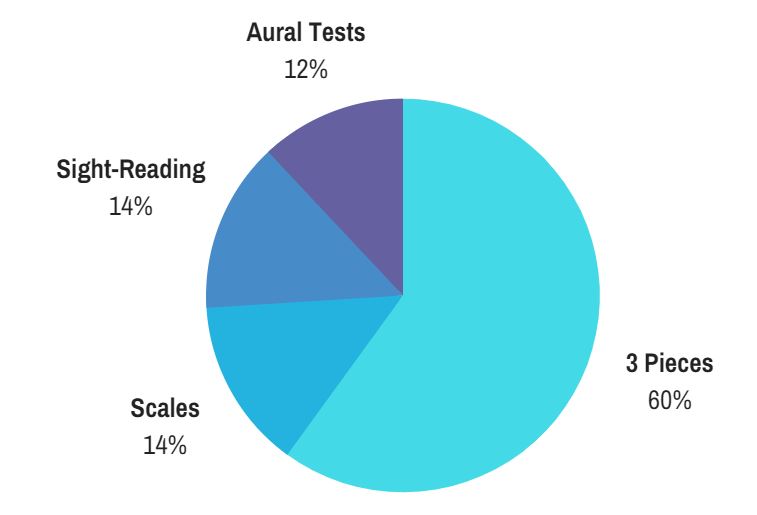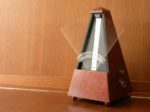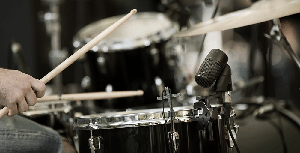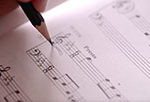
Every child fears examinations. This fear is no different for your child when they are heading into an ABRSM piano practical exam, sweaty palms are definitely the first thing you will notice about them. Biologically speaking, being anxious before an upcoming test or exam is perfectly normal; however, the degree of anxiety can be managed with the right amount of quality practice.
Before we dive into the different ways that you can help prepare your child for an ABRSM piano practical with tips from our knowledgeable teachers and students who have taken multiple ABRSM exams, let’s take a look at each component that forms the examination.
4 Main Areas
There are four main sections in the practical exam: performance of the 3 prepared examination pieces, the examiner-selected scales and arpeggios, sight-reading, and aural tests. These four segments add up to a total of 150 points. A minimum score of 100 points is required to pass, 120 points to secure a merit, and an additional 10 points to land a distinction.

The bulk of the points lies in the 3 piano pieces, consisting of 30 points each. Musical elements such as pitch, tone, variation, and tempo, in addition to individual interpretation of the piece will be taken into account during grading. Note that the examination syllabus differs every year; thus, it is imperative to ensure that the materials bought are in line with the year that your child has registered for the examination. The practical book contains 9 piano scores divided into 3 lists - A, B, and C. It gives the examinee the flexibility to choose one piece from each list.
The scales & arpeggios and sight-reading adds up to a total of 42 points, each being worth 21 points individually. Both portions test an individual’s fingering techniques and tempo consistency with other aspects such as musicality and style. For scales & arpeggios, candidates are required to play from memory. The examiner will request at least one type of scale, arpeggio, or broken chord to be played with both hands or hands separately. For sight-reading, a piece will be chosen at random. Individuals are granted thirty seconds to analyze the piece or play any part of the piece before the official assessment.
The aural tests form the last 18 points. It examines the individual’s musical sense and theoretical knowledge. The assessment ranges from singing or playing from memory, identifying cadences, identifying chords, harmonizing with the examiner, identifying modulations, to describing characteristics of a piece played by the examiner. For an in-depth understanding of how aural text is assessed for each grade, take a look at the ABRSM 2015 syllabus.
After breaking down the different sections of the examination, we compiled a list of things to look out for during the examination and tips for practice.
5 Tips In the Examination Room
Prepare your child with these 5 suggested tips before they head off to into the examination room.
- First, make sure they greet the examiner before stating their name and grade to ensure that the examiner has the right evaluation paper.
- Always adjust the piano seat to a comfortable level. The examiner will grant the candidate some time for appropriate adjustment. This is important as the right seat level should give your child the leverage to play smoothly. Posture is a crucial factor when it comes to playing; read about the importance of correct posture here.
- At the beginning of the test, the examiner will ask if the candidate would like to play the pieces first or scales. Some examinees like to play pieces first, just to get it out of the way. On the other hand, starting with scales first may give your child the necessary warm-up that their fingers need before playing their examination pieces.
- Remind your child to take deep breaths before starting and in between sections to draw out their nervousness. One tactic is to exhale over a longer period of time, the inhaling that ensues leaves your child considerably calmer and more relaxed.
- If your child slipped on a few notes while starting out, they can request for a do-over; however, practice this with caution. Too many request may show that the candidate did not have ample practice and is unfamiliar with the syllabus. At the end of the day, encourage your child to enjoy their performance more so than the results. Even professional players are prone to mistakes now and then: it is absolutely fine to glide past the mistakes.
7 Insider Tips for Practice
Practice done before the examination is important. The pointers below, curated by one of our examinees who has been through all ABRSM exams, give you and your child legitimate advice to work with.
- As mentioned above, the 3 piano pieces forms more than 60% of the grading. It is thus advisable for your child to select the ones that they feel the most comfortable practicing with.
- Build a habit to practice consistently with your child. Clock in 30 minutes every day and set 15 minutes for each component, alternating between components: for example, piano pieces and scales, or piano pieces and sight-reading. While they are playing their examination pieces, it will be good for their morale for you to be present. Having an audience boosts their confidence and it allows them to get used to another presence during their performance.
- Have your child train with a metronome to maintain their tempo consistency through their pieces, scales & arpeggios, and sight-reading.
- For sight reading, your child should take a quick glance at the piece first. Note the tempo for the said piece and make a mental mark on the various musical instructions littered throughout – forte, slur, crescendo, diminuendo, etc. Following that, play through the whole section without stopping. This will train them to complete the piece regardless of the mistakes made while playing - stopping is a mark down if it happens during the actual examination.
- For the aural exam, the questions will be set according to the grade of the exam. Read theory books and see what each grade caters to and what range of things your child can expect to be tested on. Alternatively, there are online materials that will enhance your child’s theory ability.
- If possible, head together with your child to the test center a few weeks prior to the exam and do a test-run with the designated piano. Let their fingers get used to the keyboard that they will be playing. Each piano is crafted differently, hence it is best to head for a test-run.
- For more fingering practice for your child, take a look at this video conducted by one of our accomplished piano teachers at Liberty Park Music: finger exercises for piano.
Practice makes perfect: planning out their routine is key. With regular practice, your child will get accustomed to the scales and pieces by heart which lifts a huge chunk of anxiety. Regardless, being nervous is natural. That nervousness lessens once their fingers hit the keyboard. The memory of practice takes over, and playing those examination pieces becomes second nature to them.
Ready to learn music?
Start learning with our 30-day free trial! Try our music courses!
About Liberty Park Music
LPM is an online music school. We teach a variety of instruments and styles, including classical and jazz guitar, piano, drums, and music theory. We offer high-quality music lessons designed by accredited teachers from around the world. Our growing database of over 350 lessons come with many features—self-assessments, live chats, quizzes etc. Learn music with LPM, anytime, anywhere!










